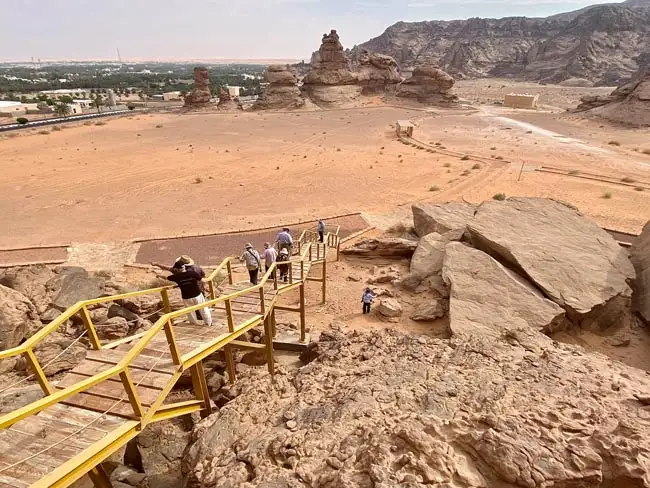Today we travel to Tabuk. From snowy mountains to the deep blue sea, Tabuk Province is home to some of Saudi Arabia's most varied natural landscapes. The region holds highly treasured historic and archaeological sites, a rich heritage from ancient civilisations.
Tabuk sits amid a grove of date palms. In former times it was a station on the Hejaz railway (now defunct). At the edge of the old part stands a Turkish fort, built in 1694. Present-day Tabuk is one of Saudi Arabia's fastest-growing industrial centres.
Tabuk's early-20th-century Hejaz Railway Station is one of the best-preserved in Saudi Arabia. Thirteen refurbished buildings include a workshop, handicrafts centre, and a building housing a locomotive and Ottoman relics. The Hejaz Railway was a narrow-gauge line running from Damascus to Medina, built to connect Istanbul with Hejaz, site of Islam's holiest shrines.
Dating to 1559, Tabuk Fort is now a museum with artifacts from the Ottoman period. The castle features mosques, an open courtyard, and watchtowers. Outside are cisterns that once captured water from a spring the Prophet Muhammad reportedly drank from.
We see At Tawba Mosque (from outside), where the Prophet Muhammad prayed when he arrived with 30,000 men in AD 630 for the Battle of Tabuk against the Byzantines. The battle never occurred, but while here, the Quran's ninth chapter, Surah At Tawba, was revealed. Originally made of bricks, mud, and palm trunks, the Ottomans rebuilt it in 1652.
Overnight in Tabuk.
Included Meal(s): Breakfast and Dinner
























